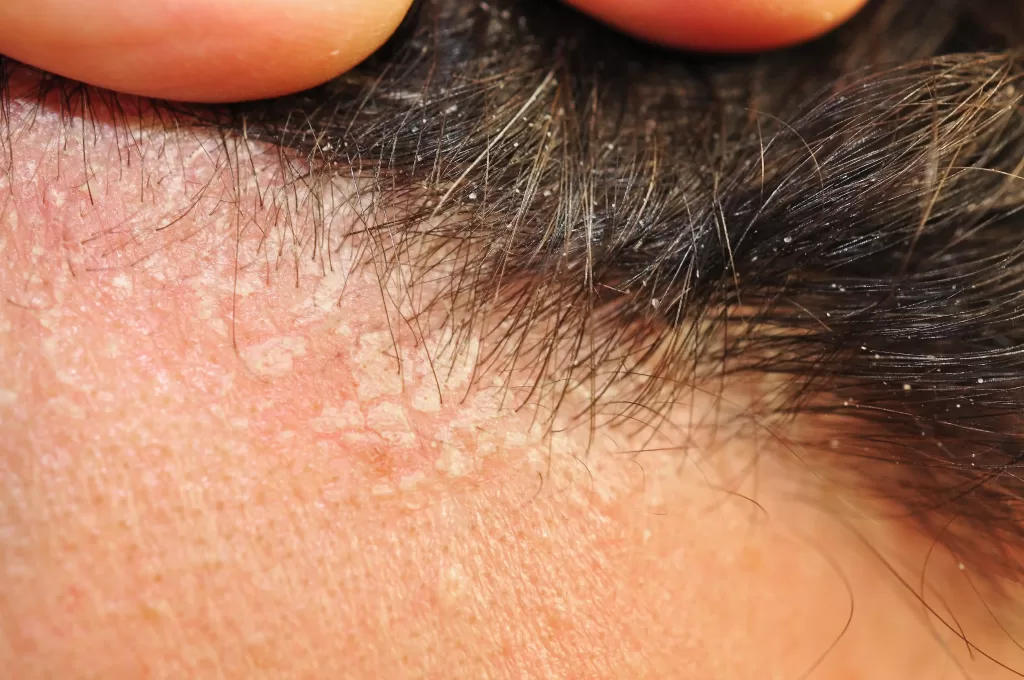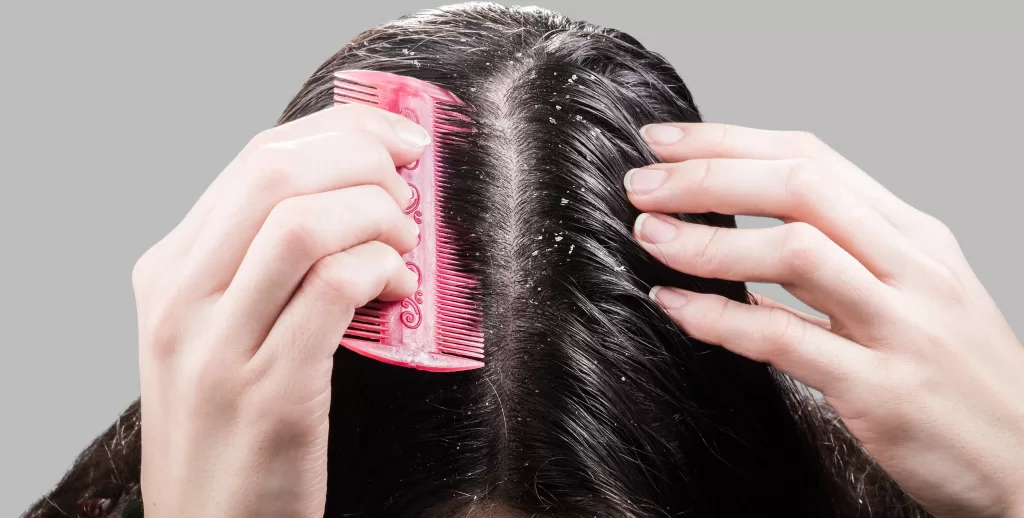Dandruff explained: Common causes and treatments
Medically Reviewed by Dr Aifric Boylan
Last updated on 22.08.2024
Dandruff, also known as pityriasis capitis, is a common condition that presents with a scaly and flaky scalp. If the scalp is also red and irritated, then the dandruff is caused by seborrheic dermatitis. The two conditions are interchangeable and treated similarly.
Symptoms of dandruff
The main symptoms of dandruff are:
- Flaky skin that sheds in clumps
- Itchy scalp
- White flecks on dark clothes
Causes of dandruff
Dandruff occurs when the normal shedding of the scalp skin is impaired, leading to skin cells sticking together and shedding as lumps.
Seborrheic dermatitis and related symptoms
If you have seborrheic dermatitis, you may also have symptoms in other areas of your body like your eyebrows, beard, or laugh lines (nasolabial folds). The affected areas may have a thickened, yellow crust. Seborrheic dermatitis is caused by Malassezia yeast, which is normal on the skin but overgrows in people with the condition.
Prevalence and risk actors
Dandruff affects about 50% of the population at some time in their life but is generally more common in:
- Men
- Oily hair
- Emotional distress, poor sleep, stress
- Older age
- Other medical conditions, such as Parkinson’s disease, HIV, eczema
- Colder climates
- Family history
Diagnosis of dandruff
The diagnosis of dandruff is usually done with an examination, but if your doctor considers another diagnosis, such as tinea or psoriasis, you may require a swab or skin biopsy.
Treatment options for dandruff and seborrheic dermatitis
Dandruff is hard to cure but can be manageable. Treatment for dandruff and seborrheic dermatitis overlap, with common recommended therapies including:
- Zinc pyrithione shampoo, which has antibacterial and antifungal effects
- Selenium sulfide shampoo, which is an antifungal that controls how much the skin sheds
- Piroctone olamine shampoo (antifungal)
- Ketoconazole shampoo (antifungal)
- Tar shampoo, which has antimicrobial, anti-itch, and skin shedding effects
- Salicylic acid shampoo, which loosens the top layer of shedded skin
- Topical corticosteroid lotions, which can provide symptomatic relief of itch
Each shampoo or lotion has its own directions on how often they should be used. Dandruff is not always able to be cured, but it can come and go depending on many factors, and often a mix of these shampoos or lotions is necessary to get the desired result.
When to seek medical advice
If your dandruff is hard to control or is leading to distress, speak to your doctor. You may need expert advice from a dermatologist.
Getting a Mental Health Care Plan in Australia: Your Guide
Getting a Mental Health Care Plan in Australia: Your Guide Mental health matters—and if you’re feeling overwhelmed, anxious, or down, a mental health care plan can help. But what is it, and how do [...]
UTI Symptoms and Treatment: What You Need to Know
UTI Symptoms and Treatment: What You Need to Know Urinary Tract Infections (UTIs) are common, uncomfortable, and often disruptive. But what exactly are the signs to watch for, and how can you get relief [...]
Free Mental Health Care Plan Online | Bulk-Billed by Qoctor
Free Mental Health Care Plan Online | Bulk-Billed by Qoctor Discover how to get a free, bulk-billed Mental Health Care Plan (MHCP) in Australia through Qoctor's telehealth service. Accessing [...]






